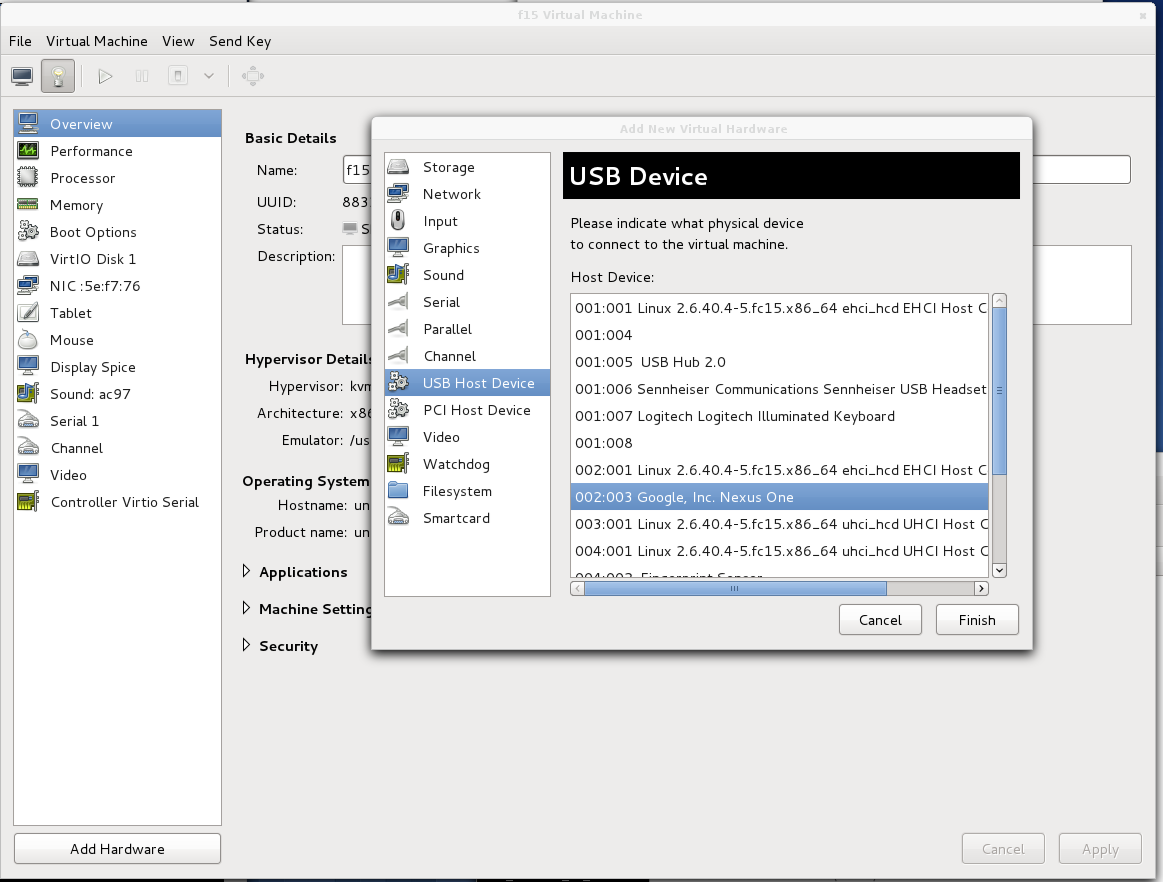


- #Qemu command line full
- #Qemu command line windows 10
- #Qemu command line software
- #Qemu command line free
For a full list of valid options refer to the man page ( man virt-install). This will attempt to pick the most suitable ACPI & APIC settings, optimally supported mouse drivers, virtio, and generally accommodate other operating system quirks. os-type=OS_TYPE Optimize the guest configuration for a type of operating system (ex. If the value ’auto’ is passed, virt-install attempts to automatically determine an optimal cpu pinning using NUMA data, if available. "CPUSET" is a comma separated list of numbers, which can also be specified in ranges. cpuset=CPUSET Set which physical cpus the guest can use. Not all hypervisors support SMP guests, in which case this argument will be silently ignored -check-cpu Check that the number virtual cpus requested does not exceed physical CPUs and warn if they do. Bear this in mind if manually specifying a UUID -vcpus=VCPUS Number of virtual cpus to configure for the guest. UUID are intended to be unique across the entire data center, and indeed world. If you specify UUID, you should use a 32-digit hexadecimal number. u UUID, -uuid=UUID UUID for the guest if none is given a random UUID will be generated. If omitted, the host CPU architecture will be used in the guest. The option is only currently available with QEMU guests, and will not enable use of acceleration. arch=ARCH Request a non-native CPU architecture for the guest virtual machine.
#Qemu command line free
If the hypervisor does not have enough free memory, it is usual for it to automatically take memory away from the host operating system to satisfy this allocation. r MEMORY, -ram=MEMORY Memory to allocate for guest instance in megabytes. To re-define an existing guest, use the virsh(1) tool to shut it down (’virsh shutdown’) & delete (’virsh undefine’) it prior to running "virt-install". This must be unique amongst all guests known to the hypervisor on the connection, including those not currently active. n NAME, -name=NAME Name of the new guest virtual machine instance. A summary of these arguments is outlined in the following table:ĭescription -h, -help Show the help message and exit -connect=CONNECT Connect to a non-default hypervisor. Some of these command-line options are mandatory (specifically name, ram and disk storage must be provided) while others are optional. Virt-install must be run as root and accepts a wide range of command-line arguments that are used to provide configuration information related to the virtual machine being created. Report this ad Running virt-install to Build the KVM Guest System For details on these requirements read Installing and Configuring Fedora KVM Virtualization. This chapter assumes that the necessary KVM tools are installed and that the system was rebooted after these were installed. Whilst most users will probably stay with the graphical virt-mamager tool, virt-install has the advantage that virtual machines can be created when access to a graphical desktop is not available, or when creation needs to be automated in a script. The virt-install tool is supplied to allow new virtual machines to be created by providing a list of command-line options. In this chapter we will turn our attention to the creation of KVM guest operating system using the virt-install command-line tool. In the previous chapter we explored the creation and management of KVM guest operating systems using the virt-manager graphical tool. $ $CXX main.cpp -specs=rdimon.Take your Fedora Linux Skills to the Next Levelįedora 31 Essentials book is now available in Print ($36.99) and eBook ($24.99) editions. There is NO warranty not even for MERCHANTABILITY or FITNESS FOR A PARTICULAR PURPOSE.
#Qemu command line software
This is free software see the source for copying conditions. #include int main ( int argc, char * argv ) $ $CXX -version arm-none-eabi-g++ (GNU Arm Embedded Toolchain 10-2020-q4-major) 10.2.1 20201103 (release) Copyright (C) 2020 Free Software Foundation, Inc. Compile the following program with ARM embedded toolchain:.a.out 123 test argc: 1 argv: - $ qemu-arm -cpu cortex-m7. The emulated process always receives a value of 1 for argc, with argv returning seemingly random characters (in Ubuntu packaged qemu 5.2), but correlating with command-line input (output below from master built qemu 6.1): $ qemu-arm -cpu cortex-m7.
#Qemu command line windows 10


 0 kommentar(er)
0 kommentar(er)
